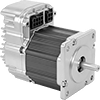Filter by
Maximum Holding Torque
Motor Frame Size
Body Shape
Mounting Position
Thrust Load Capacity
Direction of Operation
Component
Number of Shafts
Overall Length
Radial Load Capacity
Wire Lead Color
Face Shape
DFARS Specialty Metals
Export Control Classification Number (ECCN)
Motor Type
Power Transmission




























